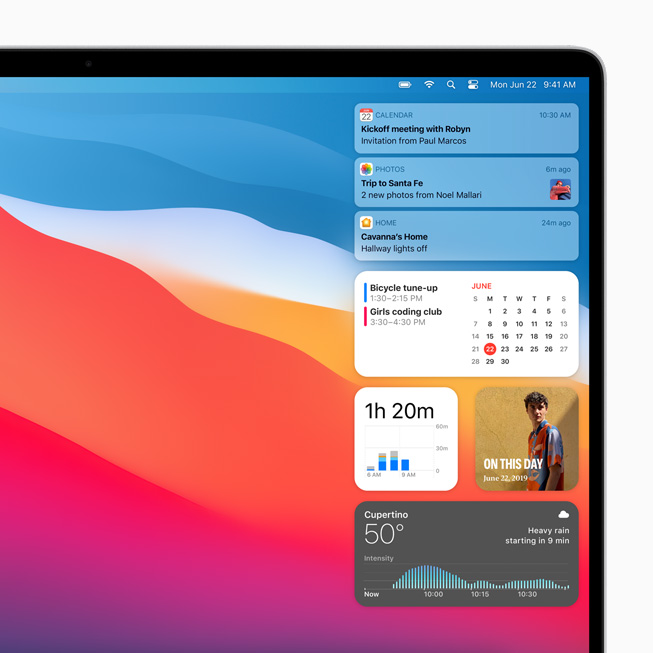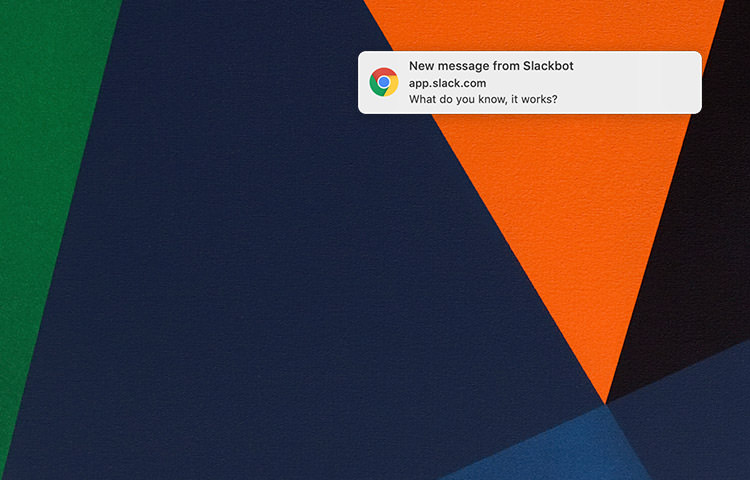The badge that can appear on selected apps in the macOS Dock is a helpful reminder that you’ve got something that requires attention. This can happen in the Messages app, as I discovered. Advanced Notifications. Later versions of Windows allow for advanced notifications, with custom templates, images, and other flexible elements. To send those notifications (from either the main process or the renderer process), use the userland module electron-windows-notifications, which uses native Node addons to send ToastNotification and TileNotification objects.
With Messages for Mac, you can send unlimited messages to any Mac, iPhone, iPad, or iPod touch that uses iMessage, Apple's secure-messaging service. iPhone owners can use it for SMS and MMS messages, too.
Set up iMessage
iMessage is the Apple messaging service you get automatically with your Apple ID.If it's not already set up, you're asked to sign in when you first open the Messages app. Sign in with same Apple ID that you use with Messages on your iPhone and other devices. It's usually the same Apple ID that you use for iCloud, the iTunes Store, the App Store, and the account you created when you first set up your Mac.
Have a conversation
- Click at the top of the Messages window.
- Address your message by typing the recipient's name, email address, or phone number. Or click and choose a recipient. If they're in your Contacts app, Messages finds them as you type. To start a group conversation, just add more recipients.
- Type your message in the field at the bottom of the window, then press Return to send it.
- To include emoji, click.
- To include an image or other file, just drag or paste it into the message field. Or use Continuity Camera to capture a photo or scan directly from your iPhone or iPad camera.
- To include an audio recording, clickand record your message.
- After starting a conversation, click Details in the corner of the window to take other actions, including:
- Choose not to be disturbed by notifications about this conversation.
- Use FaceTime to start an audio call or video call .
- Share a screen .
- See the recipient's location—if they're sharing their location with you.
- Review all of the photos and files that were exchanged in the conversation.
- Add a group name, add members to a group, or leave a group. If the group has four or more members, you can remove members: Control-click the member's name, then choose Remove from Conversation.
With macOS Sierra or later, you can also use Siri to send, read, and reply to Messages:
- ”Send a message to Susan and Johnny saying I'll be late' or ”Tell Johnny Appleseed the show is about to start” or ”Text a message to 408 555 1212.”
- ”Read the last message from Brian Park” or ”Read my new messages.”
- ”Reply that's great news” or ”Tell him I'll be there in 10 minutes.”
Add a Tapback to a message

macOS Sierra introduces Tapback to the Mac. A Tapback is a quick response that expresses what you think about a message, such as that you like it or think it's funny. In the image above, the heart next to ”See you then!' is a Tapback. Here's how to do it:
- Control-click a message bubble to open a shortcut menu.
- Choose Tapback from the menu.
- Click a Tapback to add it to the message bubble.
Your Tapback is visible to everyone in the conversation who is using iMessage with macOS Sierra or later or iOS 10 or later. Other iMessage users see 'Liked' or 'Laughed at' or 'Emphasized,' for example, followed by the text of that message.
iPhone, iPad, and iPod touch also have Tapback, as well as other message effects available only on those devices. Most such affects look the same on your Mac when you receive them. Others appear as a description of the effect, such as ”(sent with Loud Effect).”
Send text messages to anyone from your Mac
If you have an iPhone with a text messaging plan, learn how to set up text message forwarding so you can send and receive SMS and MMS messages from your Mac.
Delete a message or conversation
When you permanently delete a message or conversation, you can't get it back. So make sure that you save important information from your messages.
To delete a message:
- Open a message conversation.
- Control-click the blank area of a message bubble that you want to delete.
- Choose Delete.
- Click Delete.
To delete a conversation:
- Control-click a conversation.
- Choose Delete Conversation.
- Click Delete.
Learn more
- To learn more about Messages, choose Messages Help from the Help menu in Messages.
- If you get an error when trying to sign in to iMessage, learn what to do.
FaceTime is not available in all countries or regions.
This short tip teaches you how you can disable Catalina upgrade notifications in the System Preference’s Dock icon and the ‘Upgrade Now’ prompt in the Software Update pane in macOS. You may want to do so, if you are not ready for the upgrade (such as Catalina compatibility issues etc) and if the notifications annoy you. These are just a few reasons why you’d want to stop macOS Catalina from showing up in Software Updates on your Mac. Since you want to disable this, you also would not want to see the red notification bubbles indicating that you have updates available. Do you also want to turn off upgrade notification badges in the dock? Then this article is for you.
How to Disable Update Notification in Software Update
This is very easy to do:
Please follow the steps:
1. Close the System Preferences app.
2. Open the Terminal app (Applications / Utilities; or you may use Spotlight)
3. Enter the following command and press enter. You may have to enter your password.
4. Catalina Upgrade notice will disappear now. You will see the when you open System Preferences (Apple menu > System Preferences > Software Update)

However, you may want to undo this later when you are ready to upgrade. You can do so easily as well. Here is how:
1. Again open the Terminal app.
2. And enter the following command and hit enter (again you may have to enter your password):
This will make Catalina Upgrade appear again.
How to disable Catalina Update Badge Notifications (the red bubble icon) in the dock
1. Open the Terminal app.
2. Enter the following command and hit enter
3. Now you will need to restart the dock by entering the following command in the Terminal and pressing enter:
Macos App Download
4. The dock will restart and you will not see the notifications badges.
Macos Messages App Notifications
See also: Notifications Disappearing From Lock Screen? Fix